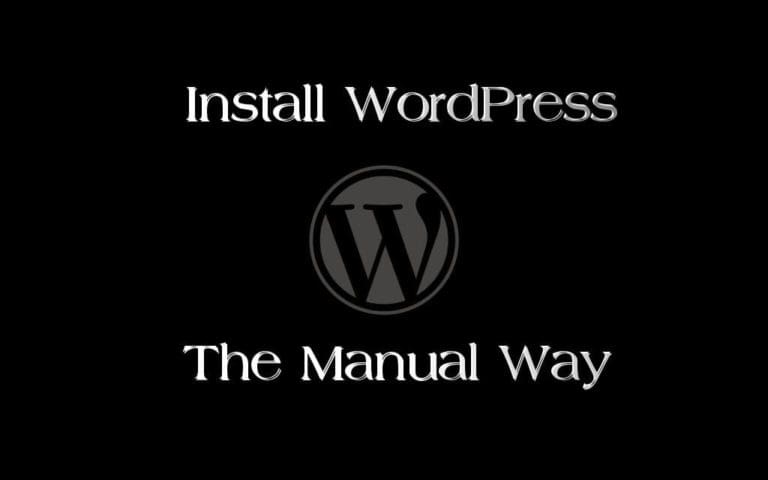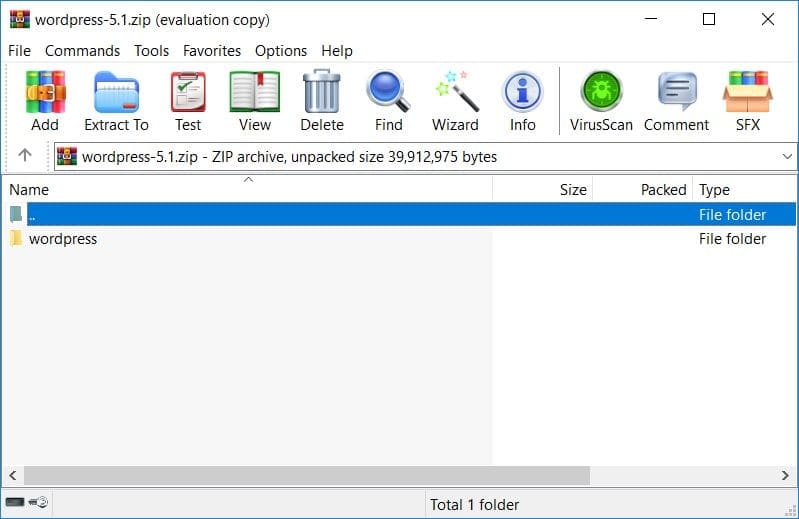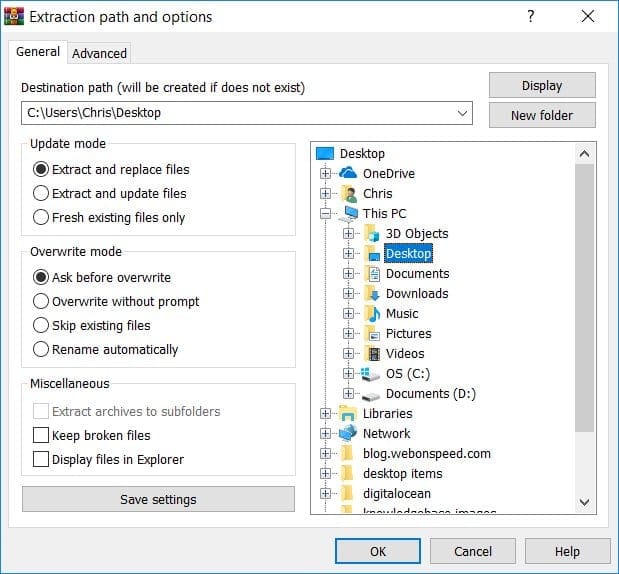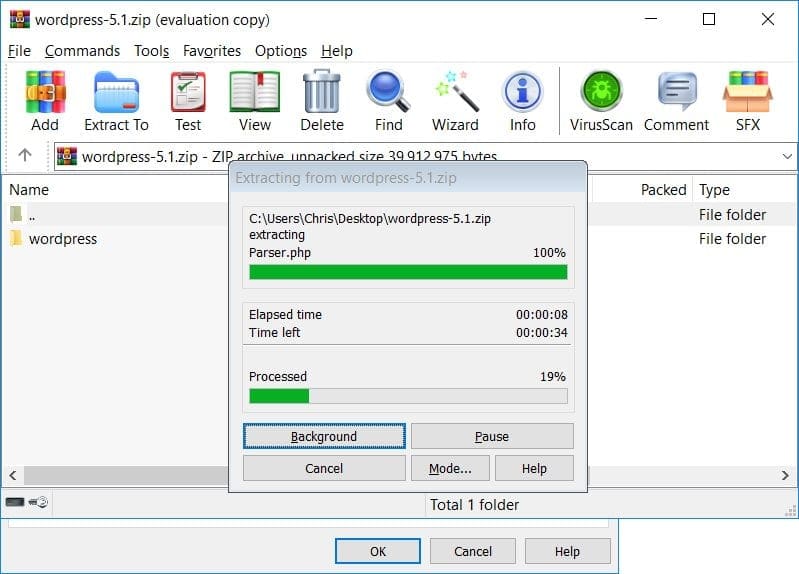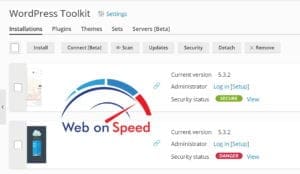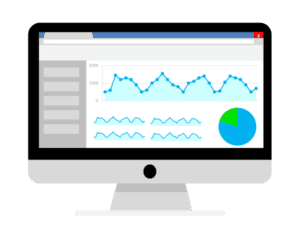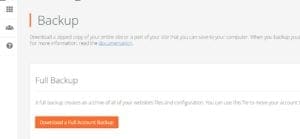Installing WordPress Manually
For this tutorial I will be using Apache web server running on Ubuntu 18.04 but the basis of installing WordPress should be the same regardless of Operating System.
Please make sure that you have a valid FTP and MySQL PHPmyAdmin account before continuing.
We need to download the latest version of WordPress (latest version when article was published was 5.1) from https://wordpress.org/download
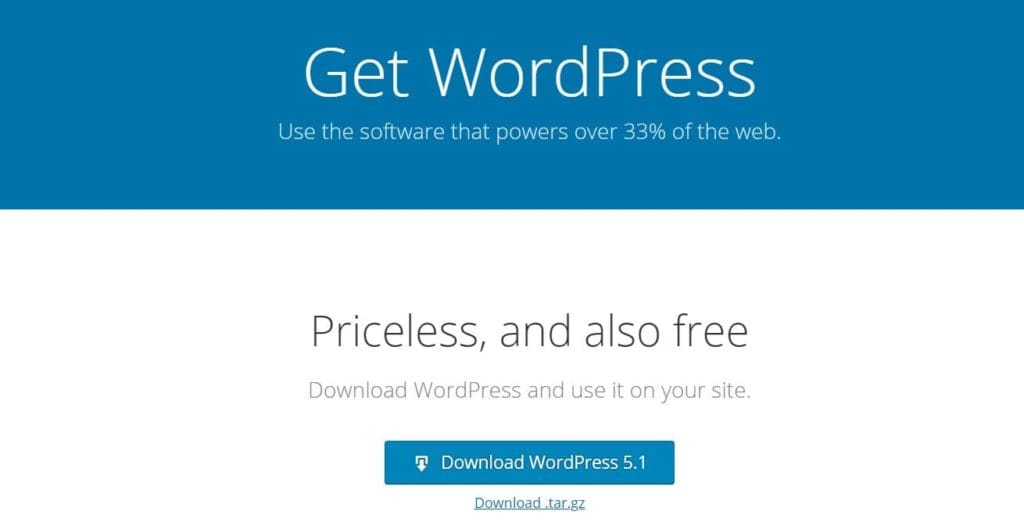
Once we have downloaded WordPress we will need to extract the files before uploading to the server. (Some web hosts will give us the option to extract .zip files directly from the file manager but for this demonstration we will do everything manually).
Once we have extracted the files we should see a new folder where we extracted the zip file called wordpress (for this demonstration the files were extracted to the desktop. We now have to upload this onto the web server and for this we will be using FileZilla.
We need to transfer these files onto the server so in FileZille enter your FTP username and password. This should take you to the root directory on the server where your web files should be stored. Please contact your host or contact us for help.
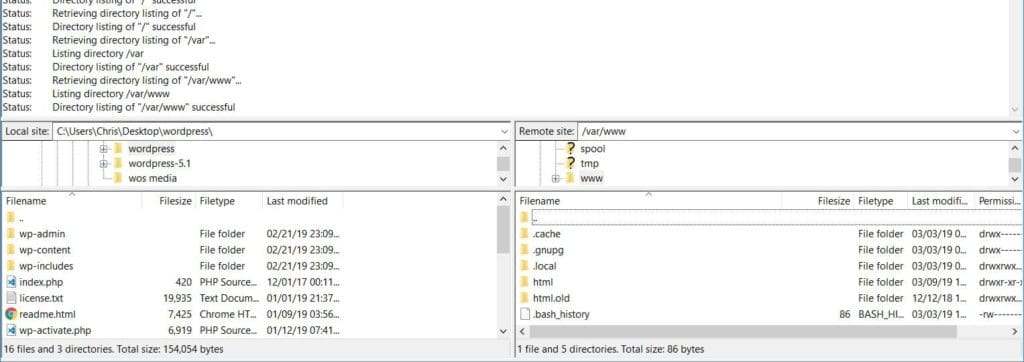
Once the transfers of the files are complete we need to setup a database for the WordPress site. Before proceeding we will need a username and password for our Database. This tutorial is using cPanel Database manager.
cPanel -> Databases -> MySQL Databases
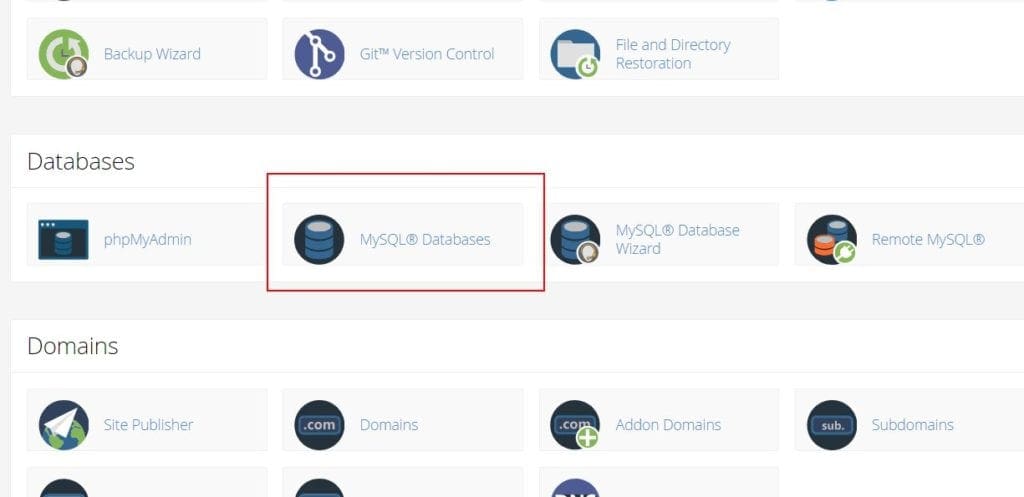
Create a Database, cPanel normally adds your username with an underscore to database names. For my example I am going to call the database wordpress. You should name your database name to something a bit more secure.
Once we have created the database we need to create a user that we will use the database and grant this user access rights.
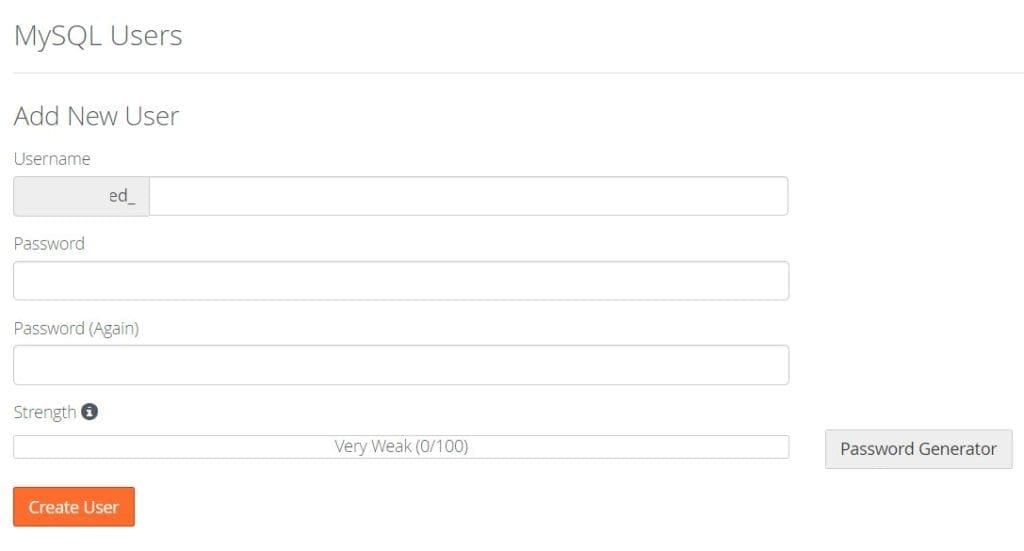
Now we must link the user to the database further down the database page. Select the new user and database and add.
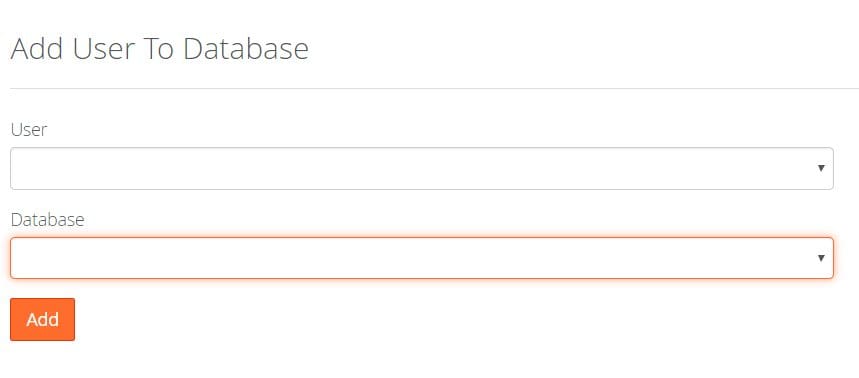
Configuring the wp-config.php file
We now need to copy the wp-config-sample.php to wp-config.php and modify the following settings inside the config file
// ** MySQL settings - You can get this info from your web host ** //
/** The name of the database for WordPress */
define( 'DB_NAME', 'database_name_here' );
/** MySQL database username */
define( 'DB_USER', 'username_here' );
/** MySQL database password */
define( 'DB_PASSWORD', 'password_here' );
/** MySQL hostname */
define( 'DB_HOST', 'localhost' );We must change the database configuration settings here
// ** MySQL settings – You can get this info from your web host ** //
/** The name of the database for WordPress */
define( ‘DB_NAME’, ‘database_name_here‘ );
/** MySQL database username */
define( ‘DB_USER’, ‘username_here‘ );
/** MySQL database password */
define( ‘DB_PASSWORD’, ‘password_here‘ );
/** MySQL hostname */
define( ‘DB_HOST’, ‘localhost’ );
We also need to setup unique keys for the WordPress site. Whenever we create a manual install we use the wordpress provided salt generator which is available here
https://api.wordpress.org/secret-key/1.1/salt/ just copy this text and replace the empty keys you have in the wp-config.php file

https://api.wordpress.org/secret-key/1.1/salt/
Copy and replace the keys in the wp-config.php file
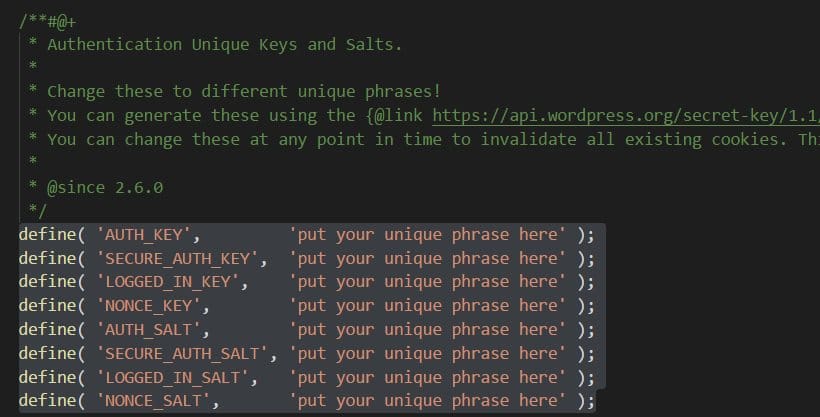
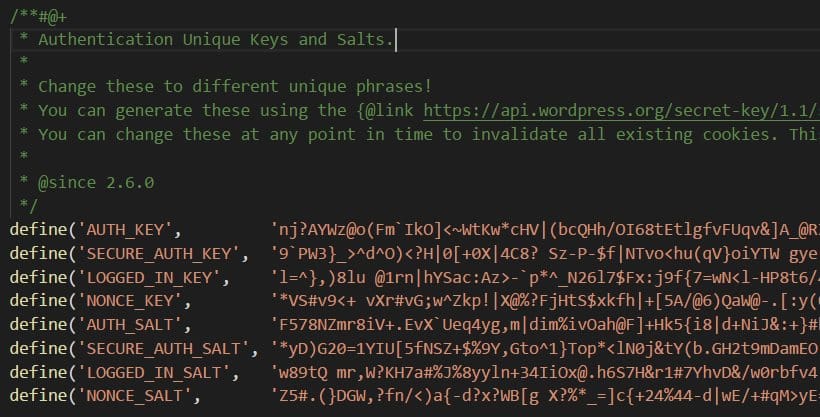
Last thing to do is set the database prefix. WordPress defaults the prefix to wp_ but it is highly recommended to change this. Can be a selection of letters or numbers. For this install I will set the prefix to be wpwos01_
/**
* WordPress Database Table prefix.
*
* You can have multiple installations in one database if you give each * a unique prefix. Only numbers, letters, and underscores please!
*/
$table_prefix = ‘wpwos01_‘;
Load your new WP Site
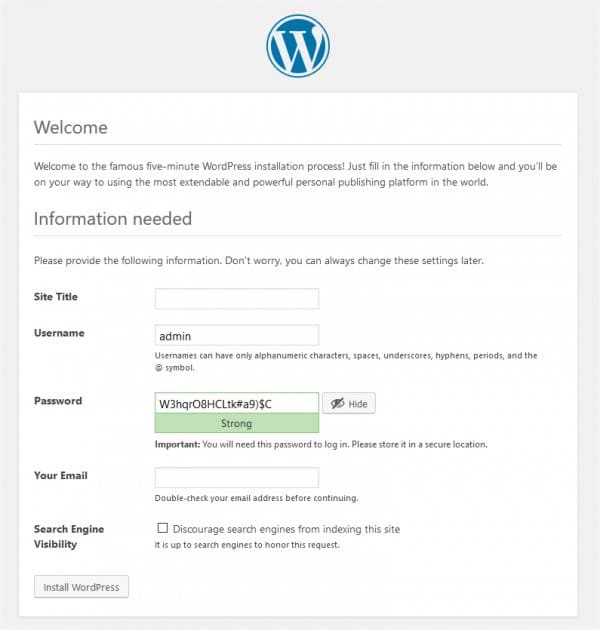
Load your new website in the browser and you should be presented with the WordPress installation screen. Enter the Site Title, your Username and password. The email address and click on Install WordPress
Your website is not installed. Please leave a comment and share this post if you thought it was useful.
